-
 Bitcoin
Bitcoin $83,719.7707
1.10% -
 Ethereum
Ethereum $1,843.3494
1.45% -
 Tether USDt
Tether USDt $1.0001
0.02% -
 XRP
XRP $2.1349
-0.61% -
 BNB
BNB $604.4916
-0.04% -
 Solana
Solana $127.6136
1.98% -
 USDC
USDC $1.0002
0.01% -
 Dogecoin
Dogecoin $0.1674
-1.16% -
 Cardano
Cardano $0.6614
-1.71% -
 TRON
TRON $0.2372
2.80% -
 Toncoin
Toncoin $4.0541
6.43% -
 Chainlink
Chainlink $13.6576
0.10% -
 UNUS SED LEO
UNUS SED LEO $9.0996
-5.99% -
 Stellar
Stellar $0.2692
0.23% -
 Avalanche
Avalanche $19.0990
-1.55% -
 Shiba Inu
Shiba Inu $0.0...01247
-0.95% -
 Sui
Sui $2.3064
-2.23% -
 Hedera
Hedera $0.1658
-2.76% -
 Polkadot
Polkadot $4.0886
0.30% -
 Litecoin
Litecoin $83.5302
-3.33% -
 MANTRA
MANTRA $6.3142
0.94% -
 Bitcoin Cash
Bitcoin Cash $304.7384
-0.09% -
 Bitget Token
Bitget Token $4.5240
-1.32% -
 Dai
Dai $1.0000
0.02% -
 Ethena USDe
Ethena USDe $1.0000
0.02% -
 Pi
Pi $0.7101
-7.12% -
 Hyperliquid
Hyperliquid $13.3087
5.82% -
 Monero
Monero $216.3935
-0.47% -
 Uniswap
Uniswap $6.0333
1.14% -
 Aptos
Aptos $5.3927
1.84%
How can the revenue of mining be improved by optimizing mining software configuration?
Optimizing mining software configuration boosts hashrate and reduces power consumption, directly impacting cryptocurrency mining revenue and efficiency.
Mar 28, 2025 at 08:21 pm
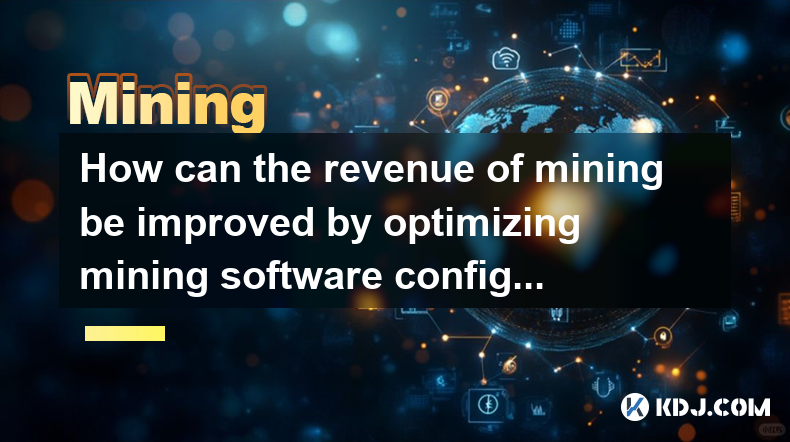
Understanding Mining Software and its Impact on Revenue
Mining cryptocurrency involves solving complex mathematical problems to validate transactions and add new blocks to the blockchain. The efficiency of this process directly impacts your profitability. Mining software acts as the intermediary between your hardware and the blockchain network. Optimizing its configuration is crucial for maximizing your revenue. The software dictates how your hardware resources are utilized, affecting your hash rate and ultimately, your earnings. Poorly configured software can lead to wasted energy and reduced mining efficiency.
Key Aspects of Mining Software Configuration
Several factors within your mining software configuration significantly influence your mining revenue. These include:
Hashrate: This represents the computational power of your mining rig. Higher hashrate generally means more chances of solving a block and earning rewards. Optimizing software ensures your hardware operates at its peak hashrate.
Power Consumption: Efficient software minimizes wasted energy. Lower energy consumption translates directly into higher profit margins, as you're paying less for electricity.
Pool Selection: Choosing the right mining pool is vital. A pool with a high payout frequency and low fees will increase your revenue. Your mining software facilitates the connection to the chosen pool.
Overclocking Settings: Carefully adjusting overclocking settings within your mining software can boost hashrate. However, improper overclocking can damage your hardware, so proceed with caution and understand the risks involved.
Temperature Monitoring and Control: High temperatures can reduce hashrate and shorten the lifespan of your hardware. Software with built-in temperature monitoring and fan control is essential for maintaining optimal operating temperatures.
Step-by-Step Guide to Optimizing Mining Software
Optimizing your mining software is a multi-step process that requires careful attention to detail. Here's a breakdown:
Choose the Right Software: Select a reputable and well-maintained mining software tailored to your specific hardware and cryptocurrency. Research different options and read reviews before making a decision. Consider factors like ease of use, support, and community feedback.
Update Your Software: Regularly updating your mining software is crucial. Updates often include bug fixes, performance improvements, and new features that can boost your efficiency and revenue. Always check for updates before starting your mining operation.
Configure Your Hardware: Your mining software needs to be properly configured to recognize and utilize all your hardware components effectively. This includes GPUs, CPUs, and RAM. Incorrect configuration can significantly reduce your hashrate.
Adjust Overclocking Settings (Cautiously): Experiment with overclocking settings to find the optimal balance between performance and stability. Monitor temperatures closely and avoid pushing your hardware too hard.
Monitor Performance Metrics: Constantly monitor your mining software's performance metrics, including hashrate, power consumption, and temperatures. This allows you to identify and address any issues promptly. Regular monitoring is key to maximizing your revenue.
Optimize Fan Curves: Configure your fan curves to maintain optimal temperatures without excessive noise. Balance cooling performance with noise levels.
Select the Right Mining Pool: Choose a mining pool with a low fee structure and consistent payouts. Research different pools and compare their performance.
Advanced Optimization Techniques
For more advanced users, exploring advanced optimization techniques can further enhance mining revenue. These include:
Fine-tuning algorithm parameters: Some mining software allows for fine-tuning of the mining algorithm parameters. This requires a deep understanding of the algorithm and can yield significant performance gains but also carries risks.
Using specialized drivers: Using specialized drivers optimized for mining can improve performance. However, always ensure compatibility with your software and hardware.
Implementing efficient cooling solutions: Investing in high-quality cooling solutions, such as water cooling, can significantly reduce temperatures and increase hashrate.
Frequently Asked Questions
Q: What are the most common mining software options?
A: Popular choices include NiceHash Miner, PhoenixMiner, and TeamRedMiner, each with its strengths and weaknesses depending on the hardware and cryptocurrency being mined.
Q: How often should I update my mining software?
A: It's best practice to check for updates regularly, often weekly, as updates frequently include performance improvements and bug fixes.
Q: Can overclocking damage my hardware?
A: Yes, aggressive overclocking can lead to hardware damage, including reduced lifespan and even complete failure. Proceed with caution and monitor temperatures closely.
Q: How do I choose the right mining pool?
A: Consider factors like pool fees, payout frequency, and the pool's hashrate. Research different pools to find one that suits your needs.
Q: What are the risks associated with mining cryptocurrency?
A: Risks include hardware failure, fluctuating cryptocurrency prices, and the potential for software bugs or vulnerabilities.
Q: How can I monitor my mining performance effectively?
A: Use the built-in monitoring tools in your mining software and consider third-party monitoring solutions to track key metrics like hashrate, power consumption, and temperatures. Regularly reviewing these metrics will help identify and address any potential problems.
Disclaimer:info@kdj.com
The information provided is not trading advice. kdj.com does not assume any responsibility for any investments made based on the information provided in this article. Cryptocurrencies are highly volatile and it is highly recommended that you invest with caution after thorough research!
If you believe that the content used on this website infringes your copyright, please contact us immediately (info@kdj.com) and we will delete it promptly.
- The Crypto Market Continued Slumping on Monday, with the Fear and Greed Index Slipping to 24
- 2025-03-31 23:40:12
- Why You Should Care About Dogecoin ($DOGE) Right Now
- 2025-03-31 23:40:12
- Solaxy ($SOLX) Smashes Past $28.5M Presale Milestone, Unveiling Fresh Developer Upgrades
- 2025-03-31 23:35:12
- After a Spirited Attempt to Breach Critical Resistance Levels, the Canine-Themed Digital Asset Has Encountered a Significant Price Correction
- 2025-03-31 23:35:12
- XRP (XRP) Has Lost More Than 40% Since Hitting a Multi-Year High Near $3.40 in January
- 2025-03-31 23:30:13
- MicroStrategy Buys the Dip, Adding 22,048 Bitcoins (BTC) to Its Holdings
- 2025-03-31 23:30:13
Related knowledge
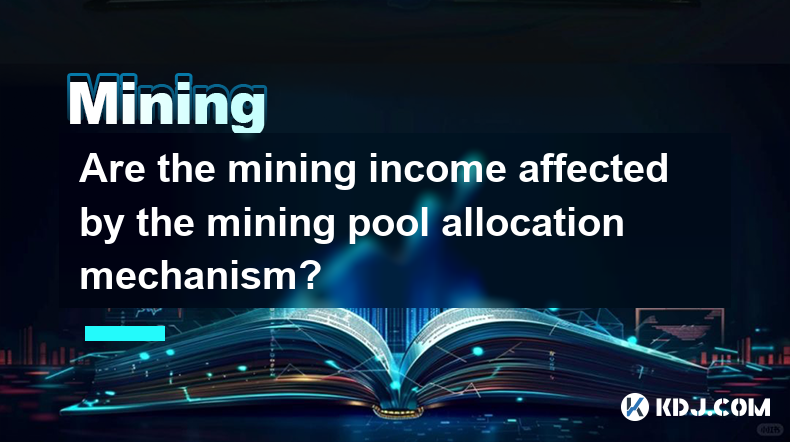
Are the mining income affected by the mining pool allocation mechanism?
Mar 31,2025 at 05:49pm
Understanding Mining Pool Allocation MechanismsMining pools aggregate the hashing power of many miners to increase the chances of successfully mining a block. The reward for successfully mining a block is then distributed among the pool's participants based on their contribution – usually measured in shares submitted. The allocation mechanism determine...
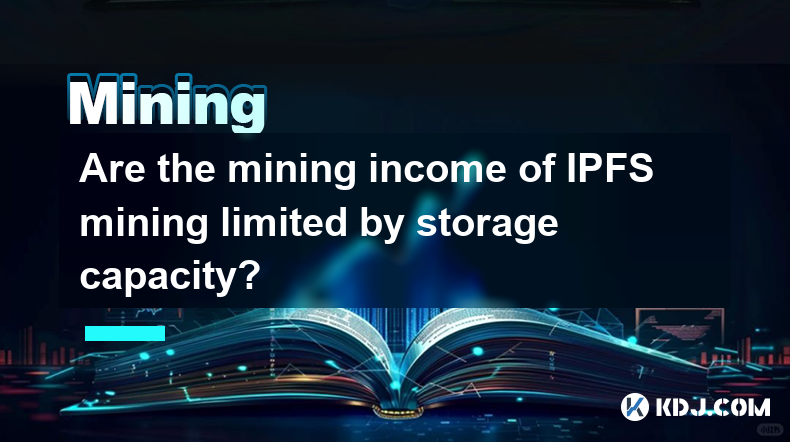
Are the mining income of IPFS mining limited by storage capacity?
Apr 01,2025 at 12:00am
Understanding IPFS Mining and its Revenue ModelIPFS (InterPlanetary File System) mining, unlike Bitcoin mining which relies on computational power, focuses on providing storage and bandwidth to the network. Miners earn rewards by making their storage available and contributing to the overall health and efficiency of the decentralized network. The amoun...

What is the difference between mining machine mining that can earn 2,000 yuan a day and ASIC mining?
Mar 31,2025 at 08:56pm
Understanding High-Earning Mining Machines and ASICsThe claim of a mining machine earning 2,000 yuan (approximately $280 USD) daily is a bold one, requiring careful examination. This level of profitability is highly dependent on several factors, and isn't necessarily indicative of a specific type of mining machine. It's crucial to understand that profi...
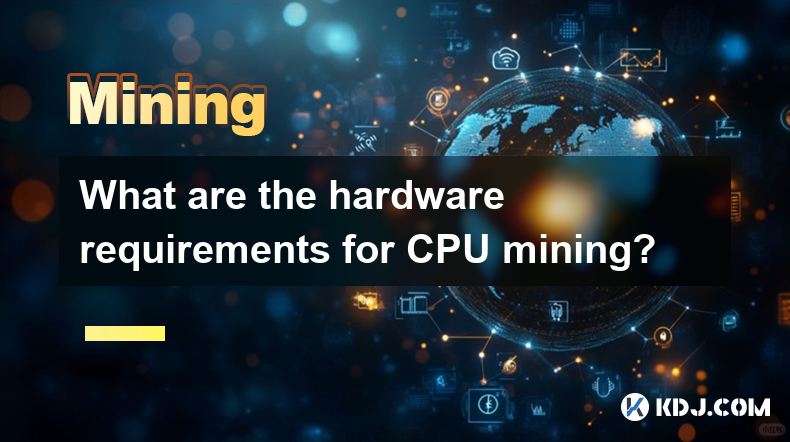
What are the hardware requirements for CPU mining?
Mar 31,2025 at 10:49pm
Understanding CPU Mining in the Cryptocurrency LandscapeCPU mining, once a prevalent method for earning cryptocurrencies, has significantly diminished in popularity due to the rise of specialized hardware like ASICs and GPUs. While still technically possible for some less computationally intensive cryptocurrencies, it's crucial to understand its limita...
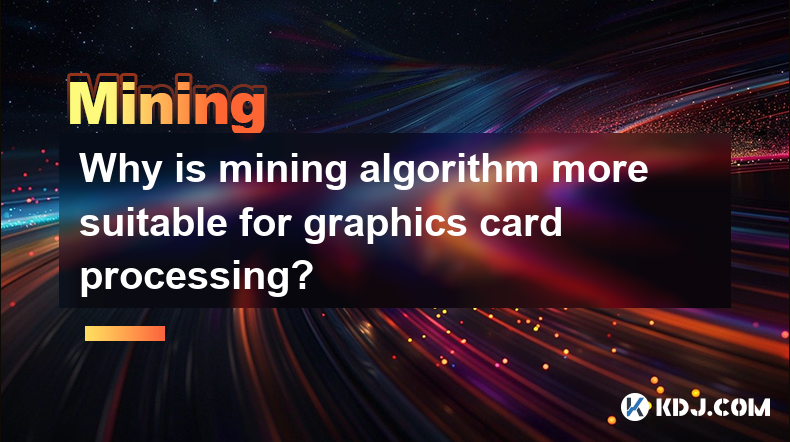
Why is mining algorithm more suitable for graphics card processing?
Mar 31,2025 at 05:28pm
The Parallel Processing Power of GPUs in Cryptocurrency MiningThe core reason why many cryptocurrency mining algorithms are more suitable for graphics card (GPU) processing lies in their inherent architecture. GPUs are designed for parallel processing, handling many calculations simultaneously. This contrasts with CPUs, which excel at sequential proces...
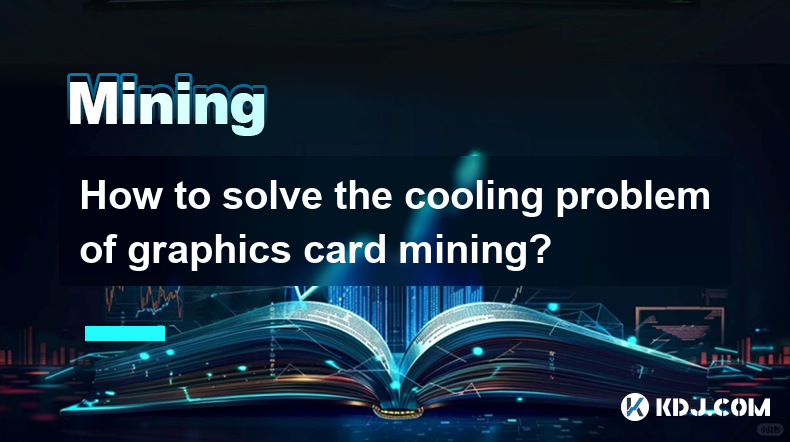
How to solve the cooling problem of graphics card mining?
Mar 31,2025 at 02:35pm
Understanding GPU Cooling in Cryptocurrency MiningGraphics cards (GPUs) generate significant heat during cryptocurrency mining, demanding efficient cooling solutions to prevent damage and maintain optimal performance. Overheating can lead to reduced hash rates, instability, and even permanent hardware failure. This necessitates a proactive approach to ...

Are the mining income affected by the mining pool allocation mechanism?
Mar 31,2025 at 05:49pm
Understanding Mining Pool Allocation MechanismsMining pools aggregate the hashing power of many miners to increase the chances of successfully mining a block. The reward for successfully mining a block is then distributed among the pool's participants based on their contribution – usually measured in shares submitted. The allocation mechanism determine...

Are the mining income of IPFS mining limited by storage capacity?
Apr 01,2025 at 12:00am
Understanding IPFS Mining and its Revenue ModelIPFS (InterPlanetary File System) mining, unlike Bitcoin mining which relies on computational power, focuses on providing storage and bandwidth to the network. Miners earn rewards by making their storage available and contributing to the overall health and efficiency of the decentralized network. The amoun...

What is the difference between mining machine mining that can earn 2,000 yuan a day and ASIC mining?
Mar 31,2025 at 08:56pm
Understanding High-Earning Mining Machines and ASICsThe claim of a mining machine earning 2,000 yuan (approximately $280 USD) daily is a bold one, requiring careful examination. This level of profitability is highly dependent on several factors, and isn't necessarily indicative of a specific type of mining machine. It's crucial to understand that profi...

What are the hardware requirements for CPU mining?
Mar 31,2025 at 10:49pm
Understanding CPU Mining in the Cryptocurrency LandscapeCPU mining, once a prevalent method for earning cryptocurrencies, has significantly diminished in popularity due to the rise of specialized hardware like ASICs and GPUs. While still technically possible for some less computationally intensive cryptocurrencies, it's crucial to understand its limita...

Why is mining algorithm more suitable for graphics card processing?
Mar 31,2025 at 05:28pm
The Parallel Processing Power of GPUs in Cryptocurrency MiningThe core reason why many cryptocurrency mining algorithms are more suitable for graphics card (GPU) processing lies in their inherent architecture. GPUs are designed for parallel processing, handling many calculations simultaneously. This contrasts with CPUs, which excel at sequential proces...

How to solve the cooling problem of graphics card mining?
Mar 31,2025 at 02:35pm
Understanding GPU Cooling in Cryptocurrency MiningGraphics cards (GPUs) generate significant heat during cryptocurrency mining, demanding efficient cooling solutions to prevent damage and maintain optimal performance. Overheating can lead to reduced hash rates, instability, and even permanent hardware failure. This necessitates a proactive approach to ...
See all articles






















































































